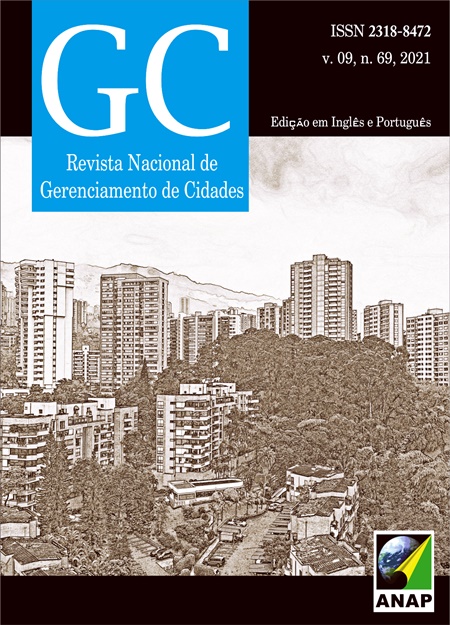Horizontal Gated Communities and the Segregation of Urban Space: Impact Assessment and Intervention Proposals
DOI:
https://doi.org/10.17271/2318847296920212562Palavras-chave:
Horizontal gated community. Closed allotment. Urban planning.Resumo
Horizontal gated communities (HCGs) affect the dynamics of cities, as they are obstacles to mobility, integration and democratic use of public space. In this work, we investigate the negative impacts caused by these ventures and propose mitigation measures from the perspective of urban planning. This was based on bibliographic materials and a collection of interventions found in the literature, which led to a proposal of intervention on the walls of an HCG located in the Brazilian city of Engenheiro Coelho/SP. The focus of the proposed intervention was the outsourcing of part of the public green areas, visual permeability and improvement of access. The intervention proposals aimed at urban democratization and the resilience of communities impacted by this type of real estate development, in addition to restoring the right to enjoy the city and minimizing socio-spatial segregation, ensuring access to public areas and greater compliance with urban mobility policies.
Downloads
Referências
ALEXANDRA, C.; NARCISO, F. Espaço Público: Desenho, Organização e Poder. Riga: Novas Edições Acadêmicas, 2013.
BRASIL. Lei nº 6766, de 19 de dezembro de 1979. Dispõe sobre o Parcelamento do Solo Urbano e dá outras Providências. Brasília, DF. Disponível em: <http://www.planalto.gov.br/ccivil_03/LEIS/L6766.htm>. Acesso em: 20 nov. 2020.
BRASIL. Lei nº 12587, de 03 de janeiro de 2012. Brasília, DF. Disponível em: <http://www.planalto.gov.br/ccivil_03/_Ato2011-2014/2012/Lei/L12587.htm>. Acesso em: 20 nov. 2020.
BRASIL. Lei nº 13465, de 11 de julho de 2017. Brasília, DF. Disponível em: <http://www.planalto.gov.br/ccivil_03/_Ato2015-2018/2017/Lei/L13465.htm>. Acesso em: 20 nov. 2020.
CRUZ, S. S.; PINHO, P. Closed Condominiums as Urban Fragments of the Contemporary City. European Planning Studies, v. 17, n. 11, p.1685-1710, nov. 2009. Informa UK Limited.
IBGE. Censo Demográfico. População nos Censos Demográficos, segundo as Grandes Regiões, as Unidades da Federação e a situação do domicílio. IBGE, 2010. Disponível em: <https://censo2010.ibge.gov.br/sinopse /index.php?dados=8>. Acesso em: 25 set. 2020.
MELGAÇO, L. A cidade de poucos: condomínios fechados e a privatização do espaço público em Campinas. Boletim Campineiro de Geografia, v. 2, n. 1, pp. 81-105, 2012.
ROSA, V. A ilegalidade dos “condomínios fechados”: uma afronta ao desenho da cidade e a mobilidade urbana. In: 4 Colóquio Brasil-Portugal: Estratégias de Projeto e Intervenção nas Metrópoles Contemporâneas: Experiências e Perspectiva. São Paulo: Mackenzie, Nov. 2016.
SARMENTO FILHO, E. S. C. Loteamento fechado ou condomínio de fato. Curitiba: Juruá, 2012.
SEADE. S.T. Disponível em: http://www.seade.gov.br/. Acesso em 12 abr. 2020.
SECO, M. Condomínios fechados podem aumentar a insegurança das ruas ao redor. Metrópoles. 2017. Disponível em:<https://www.metropoles.com/ponto-de-vista/condominios-fechados-aumentam-a-violencia-nao-protegem-familias>. Acesso em: 9 nov. 2020.
VILLAÇA, F. Espaço intra-urbano no Brasil. São Paulo: Studio Nobel, 2001.
VILLAÇA, F. São Paulo: segregação urbana e desigualdade. Estudos Avançados, [s.i.], v. 25, n. 71, p.37-58, abr. 2011.










